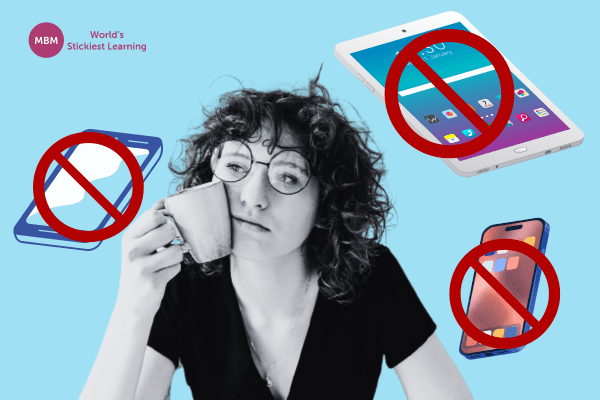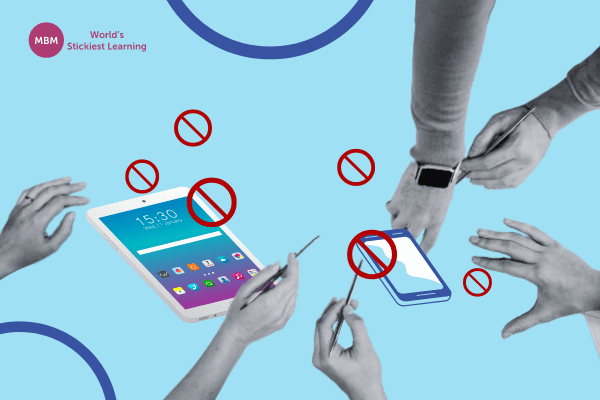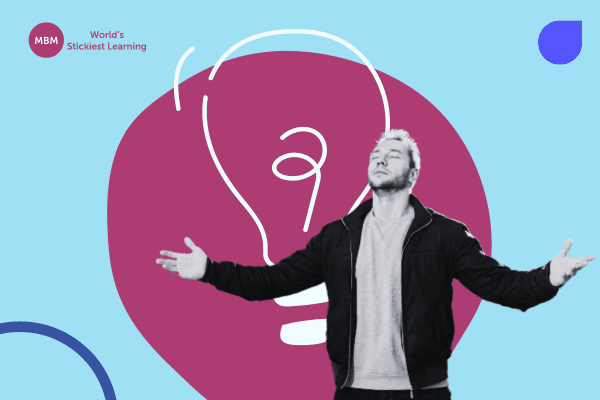Empower Your Team to Reclaim Focus
Have we lost touch with the offline world? From smartphones to social media, technology permeates every aspect of our lives. Yet, amid this digital deluge, a growing awareness of its drawbacks has emerged. In fact, research shows that about 61% of people admit they’re addicted to the internet and their digital screens. Now enter the digital detox – a conscious effort to disconnect temporarily from screens and re-engage with the offline world. In this article, we’ll explore the benefits of digital detox, and its impact on work-life balance, and provide practical tips for readers seeking to reclaim their time and attention in an increasingly connected world.

What is Digital Detox?
In essence, digital detox refers to a deliberate and temporary break from the constant use of digital devices and technology. In today’s hyperconnected world, where smartphones, laptops, and social media platforms dominate our daily lives, digital detoxes have emerged as a means to step back, recharge, and reconnect with the offline world. Additionally, the concept of digital detox acknowledges the pervasive influence of technology on modern life and recognises the need for periodic reprieves to maintain a healthy balance.
During a digital detox, individuals intentionally limit or eliminate their use of digital devices. Often, they set boundaries around screen time, social media usage, and email checking. This may involve taking a break from smartphones, tablets, computers, and other electronic gadgets for a specified period. Ranging from a few hours to several days or even weeks, some individuals may choose to disconnect entirely from the internet. Others may opt to selectively engage with technology for essential tasks only. The goal of a digital detox is to reduce dependency on digital devices. It also aims to alleviate feelings of overwhelm and stress associated with constant connectivity. Ultimately, it seeks to reclaim time for offline activities and self-care.
Signs You Need a Digital Detox

It’s easy to get swept up in the constant stream of digital information and stimuli. However, there are telltale signs that indicate when it might be time to step back and reevaluate our relationship with technology. Some common signals that suggest you might benefit from a digital detox include:
-
Constant Distraction:
If you find yourself constantly reaching for your phone or checking social media notifications, even amid important tasks or conversations, it could be a sign that your digital habits are disrupting your focus and productivity.
-
Do your learners come back from training and do nothing differently?
Sticky Learning ® is 7 times more effective than 1-day training courses. Plus, you will get a Chain of Evidence proving your Return on Investment. Discover soft skills training that changes behaviours long term.
Get Started Now
Sleep Disruption:
Difficulty falling asleep or staying asleep due to late-night scrolling sessions is a clear indicator that your screen time is interfering with your sleep quality and overall well-being.
-
Increased Stress and Anxiety:
Feeling overwhelmed or anxious when you’re unable to access your devices or keep up with the influx of messages and updates suggests that your digital habits may be contributing to heightened stress levels.
-
Physical Symptoms:
Symptoms such as eye strain, headaches, and neck pain after prolonged periods of screen use can indicate that you’re spending too much time in front of digital devices, potentially leading to long-term health issues.
-
Neglected Relationships:
If you find yourself prioritising online interactions over face-to-face connections with friends and family, it may be a sign that your digital habits are negatively impacting your real-life relationships.
How Long Does a Digital Detox Take?
The duration of a digital detox can vary depending on individual preferences, habits, and goals. Some may opt for a brief detox lasting a weekend or a few days to reset and recharge. Others may choose to embark on a more extended detox spanning several weeks or even months.
Ultimately, the length of a digital detox should align with personal needs and objectives. Whether it’s to break unhealthy habits, improve mental clarity, or foster deeper connections offline, the key is to approach the detox with intentionality and commitment. Gradually reducing screen time and engaging in offline activities that promote well-being and fulfilment is essential regardless of the duration.
Creating a Personalised Plan

Embarking on a digital detox journey involves crafting a plan tailored to your individual needs and lifestyle. Here’s a step-by-step guide to help you develop a personalised digital detox plan:
1- Self-assessment:
Begin by reflecting on your current digital habits and identifying areas of excessive consumption. Consider which digital platforms, devices, or activities dominate your time and attention. Are you spending too much time on social media? Do you find yourself mindlessly browsing the internet for hours? Be honest with yourself about where you may be overindulging in digital distractions.
2- Set Clear Goals:
Determine what you hope to achieve through your digital detox. Whether it’s reducing screen time, improving productivity, or enhancing overall well-being, establishing clear and achievable goals will provide direction and motivation throughout the detox process. Consider setting specific targets, such as limiting screen time to a certain number of hours per day. Alternatively, you could focus on disconnecting from social media for a set period.
3- Identify Triggers:
Take note of the situations or emotions that trigger excessive digital usage. This could include boredom, stress, or the need for constant stimulation. By recognising your triggers, you can develop strategies to address them effectively and prevent relapses during your digital detox.
4- Establish Boundaries:
Set boundaries around your digital usage to create a healthier balance between online and offline activities. This may involve defining specific times of day when you will engage with digital devices, as well as establishing tech-free zones in your home or workplace. Consider implementing “digital-free” activities, such as meals or outdoor excursions, to promote mindfulness and connection with the present moment.
5- Explore Offline Alternatives:
Identify alternative activities to replace screen time and enrich your offline experiences. This could involve pursuing hobbies or interests that you’ve neglected due to excessive digital consumption, such as reading, exercising, or engaging in creative pursuits. Additionally, look for opportunities to connect with nature. Spend quality time with loved ones or participate in community events that nourish your soul and rejuvenate your spirit.
6- Stay Flexible and Forgiving:
Understand that embarking on a digital detox journey is not always easy. Consequently, setbacks may occur along the way. However, be gentle with yourself and practice self-compassion if you find yourself slipping back into old habits. Remember that progress is a journey. So every small step towards reducing digital dependency is a victory worth celebrating.
By personalising your digital detox plan and considering your unique needs and circumstances, you can cultivate a healthier relationship with technology. This allows you to reclaim your time and attention for the things that truly matter in life. Stay committed to your goals; remain mindful of your digital habits. Embrace the journey towards a more balanced and fulfilling existence.
Tips for a Successful Digital Detox

Embarking on a digital detox requires thoughtful planning and commitment. Here are some practical tips to help individuals reduce screen time and establish healthier boundaries with technology:
- Designate Tech-free Zones: Establish areas in your home where digital devices are prohibited, such as the dining room or bedroom, to encourage relaxation and uninterrupted face-to-face interactions with family.
- Practice Screen-free Meals: Commit to enjoying meals without digital distractions, like smartphones or TVs, to savour the food and engage in meaningful conversations with dining companions.
- Utilise Airplane Mode: Activate aeroplane mode on your smartphone during designated times, such as during workouts or before bedtime, to minimise distractions and focus on the task at hand.
- Set Notifications Boundaries: Disable non-essential notifications on your devices to reduce interruptions and maintain focus during work or leisure time.
- Establish a Wind-down Routine: Develop a calming bedtime routine that doesn’t involve screens, such as reading a book or practising relaxation techniques, to promote better sleep quality.
- Practice Digital Decluttering: Regularly review and declutter digital devices by deleting unused apps, organising files, and also unsubscribing from unnecessary email lists to streamline digital interactions and reduce overwhelm.
Benefits of Digital Detox
-
Improved Mental Clarity and Focus:
Disconnecting from digital distractions allows your mind to declutter and focus on tasks without constant interruptions. You’ll likely find it easier to concentrate, leading to increased productivity and a sense of accomplishment.
-
Enhanced Sleep Quality and Restfulness:
Reduced exposure to the stimulating effects of screens, particularly before bedtime, can lead to better sleep patterns. By unplugging from devices, your body can naturally wind down, resulting in deeper, more restorative sleep.
-
Rediscovery of Offline Hobbies and Interests:
Taking a break from digital devices provides an opportunity to explore activities that may have been neglected due to screen time. Whether it’s gardening, playing a musical instrument, or engaging in sports, rediscovering offline hobbies can reignite passion. It can also provide a sense of fulfilment beyond the digital world.
-
Enhanced Creativity and Problem-solving Skills:
Stepping away from constant digital stimulation allows the mind to wander and explore new ideas. Engaging in offline activities that require creative thinking, such as painting or writing, can stimulate the imagination and enhance problem-solving skills. Without the constraints of screens, individuals often find innovative solutions and fresh perspectives.
-
Improved Physical Health Due to Reduced Sedentary Screen Time:
Reducing sedentary screen time can lead to improved physical health by encouraging individuals to engage in more active pursuits. These pursuits include exercise or outdoor activities. By breaking away from prolonged periods of sitting and staring at screens, individuals can reduce the risk of health issues associated with sedentary behaviour. This promotes overall well-being.
Overcoming Challenges

Navigating a digital detox can pose several common obstacles, including the fear of missing out (FOMO) and withdrawal symptoms. These challenges can hinder individuals’ efforts to disconnect from technology and may lead to feelings of anxiety or discomfort. To address these obstacles effectively, consider the following strategies:
- Acknowledge and Accept FOMO: Recognise that the fear of missing out is a common feeling but remind yourself that the benefits of a digital detox outweigh the temporary discomfort of being disconnected.
- Find Alternative Activities: Identify alternative activities to replace screen time during your detox, such as reading, spending time outdoors, or pursuing hobbies. Engaging in enjoyable and fulfilling activities can help distract from cravings and reduce the urge to reach for digital devices.
- Practice Mindfulness and Self-compassion: Cultivate mindfulness techniques to become more aware of your thoughts and feelings during the detox process. Practice self-compassion and be gentle with yourself if you experience challenges or setbacks along the way.
- Seek Support: Surround yourself with supportive friends, family members, or online communities who understand and respect your decision to detox from technology. Having a support system can provide encouragement, accountability, and guidance throughout the detox journey.
By implementing these strategies, individuals can overcome common challenges associated with a digital detox and stay committed to their goals of reducing screen time and fostering a healthier relationship with technology.
Corporate Digital Detox Initiatives
In response to the growing concerns about digital overload and its impact on employee job satisfaction and productivity, many businesses and organisations are implementing digital detox initiatives. These initiatives aim to create a healthier work environment. They aim to encourage employees to disconnect from digital devices and also cultivate a better balance between work and personal life.
One approach that companies are taking is the implementation of designated “unplugged” periods or days. Here, employees are encouraged to disconnect from work-related digital communication and tasks. For example, some organisations have introduced policies that restrict the sending and receiving of work emails during evenings, weekends, and holidays. This allows employees to fully disengage from work and recharge.
Stay organised with >> Weekends Planner 2025 updated version <<
Additionally, businesses are investing in technology solutions and tools designed to support digital well-being in the workplace. For instance, some companies are providing employees with access to productivity apps. These apps track and manage screen time, allowing them to monitor their digital habits and set limits on device usage. Others are offering training programs and workshops on digital mindfulness and time management. These programs equip employees with the skills and knowledge needed to navigate the digital world more effectively. They also help them maintain a healthy work-life balance.
Digital Detox for Families and Children

The importance of digital detoxing for families and children cannot be overstated. With screens pervading nearly every aspect of daily life, setting boundaries and promoting healthy technology use within the household is crucial. This is essential for maintaining balanced lifestyles and nurturing strong family connections. By implementing digital detoxing practices, parents can mitigate the potential negative effects of excessive screen time on children’s physical, mental, and emotional well-being.
One effective strategy for digital detoxing within families is to establish clear guidelines and routines surrounding screen time. Parents can set limits on the amount of time children spend on digital devices each day. They can also designate specific periods when screens are off-limits, such as during meals or before bedtime. By creating consistent boundaries and expectations, parents provide children with structure and guidance. This helps them develop healthier technology habits and fosters a more balanced relationship with screens. Additionally, encouraging alternative activities that promote offline engagement, such as outdoor play, reading, and creative pursuits, allows families to bond and connect in meaningful ways. This also helps in reducing reliance on digital devices.
Conclusion
In conclusion, embarking on a digital detox journey requires thoughtful planning and a commitment to prioritising well-being over constant connectivity. By personalising your approach, setting clear goals, and implementing boundaries, you can reclaim control over your digital habits and create space for meaningful offline experiences. Remember to stay flexible, be patient with yourself, and celebrate small victories along the way. Ultimately, embracing a digital detox offers the opportunity to cultivate a healthier balance between the virtual and the real, leading to greater fulfilment and happiness in life.





